

Garden Tomb
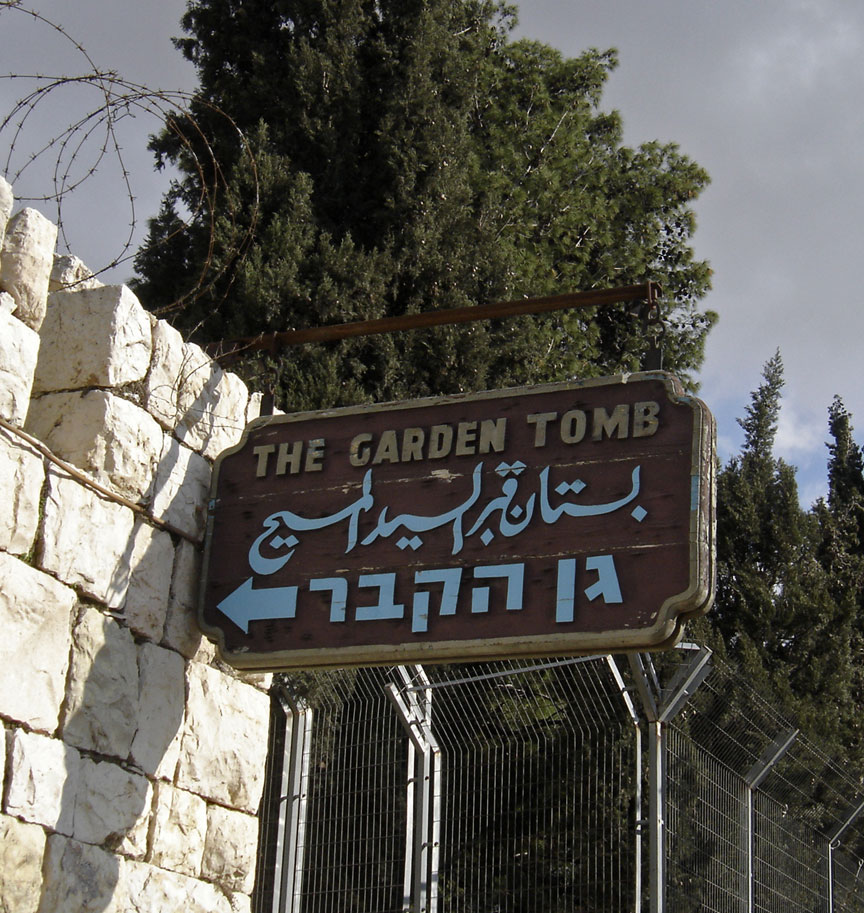
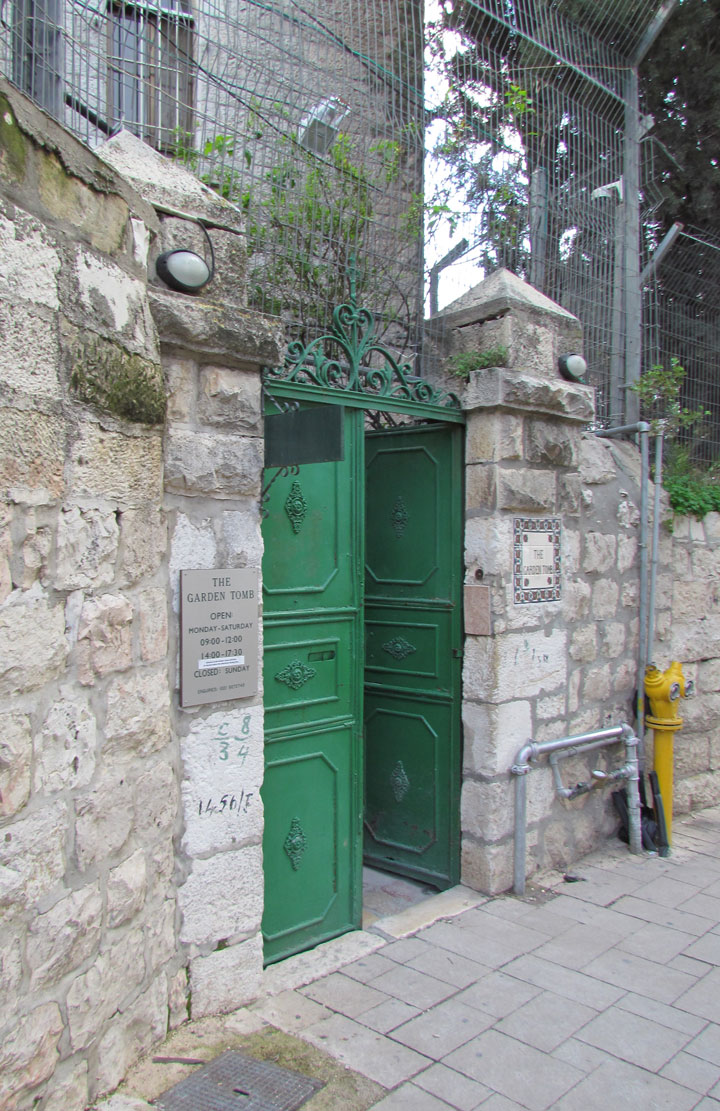
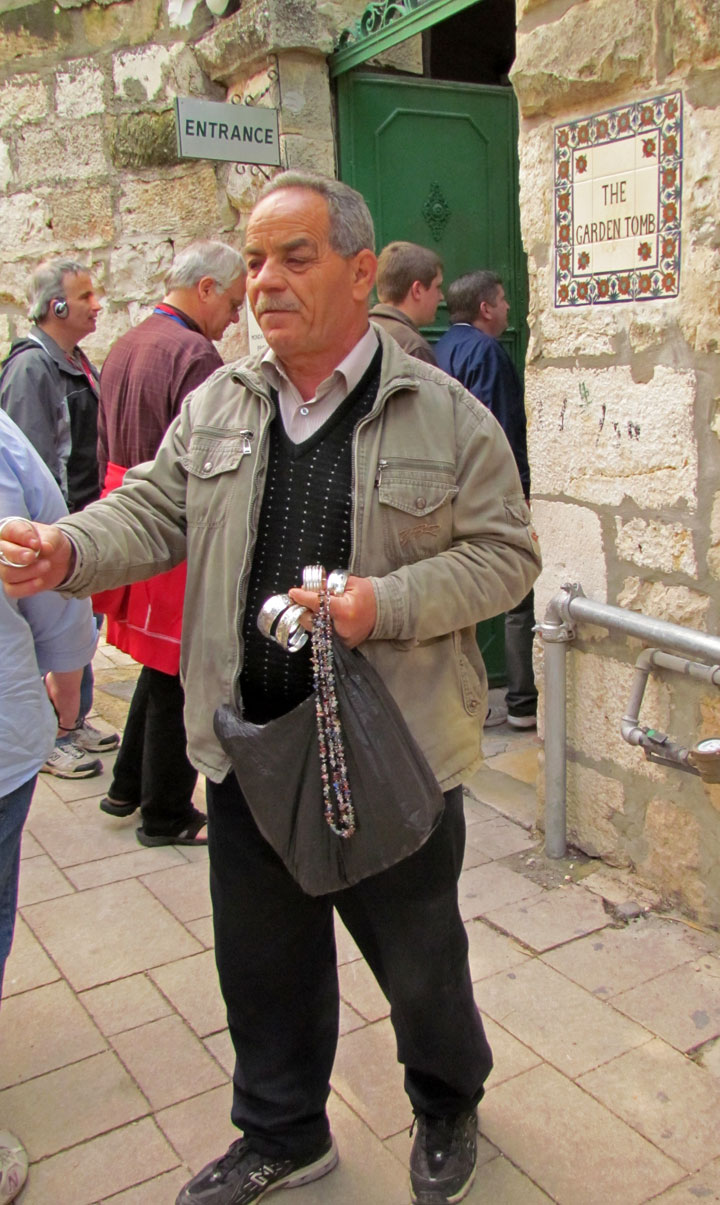
The Garden Tomb (also known as Gordon's Calvary), located in Jerusalem, outside the city walls and close to the Damascus Gate, is a rock-cut tomb considered by some to be the site of the burial and resurrection of Jesus, and to be adjacent to Golgotha, in contradistinction to the traditional site for these—the Church of the Holy Sepulchre. There is no mention of the Garden Tomb as the place of Jesus' burial before the nineteenth century.
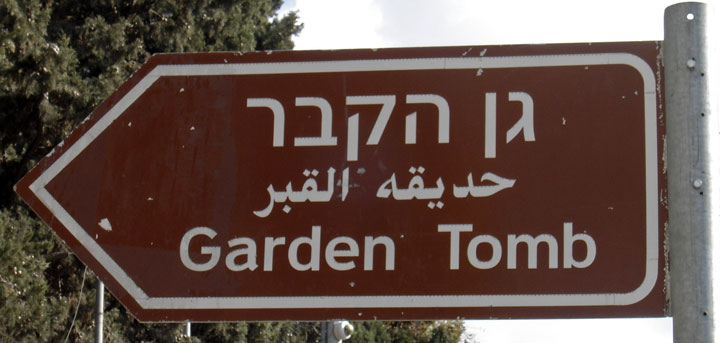
During the nineteenth century some doubts were raised concerning the
authenticity of the traditional site, the Church of the Holy Sepulchre:
* Prior to Constantine's time, the site was a temple to Aphrodite, built by Hadrian. Archaeology suggests that the exact location claimed for the tomb would have been within Hadrian's Temple, or likely to have been destroyed under the temple's heavy retaining wall. The temple's location complies with the typical layout of Roman cities (i.e. adjacent to the Forum, at the intersection of the main north-south road with the main east-west road), rather than necessarily being a deliberate act of contempt for Christianity.
* A spur would be required for the rock face to have included both the alleged site of the tomb and the tombs beyond the western end of the church.
* First century Jewish leaders condemn the idea of burial to the west of the city, a condemnation archaeologically corroborated by the locations of the known ancient Jewish graves.
* The site is currently within the Old City walls, and due to the heights of the terrain, it would be dangerous and unlikely, from a town-defense point of view, for the walls to have previously been east of the Church of the Holy Sepulchre.
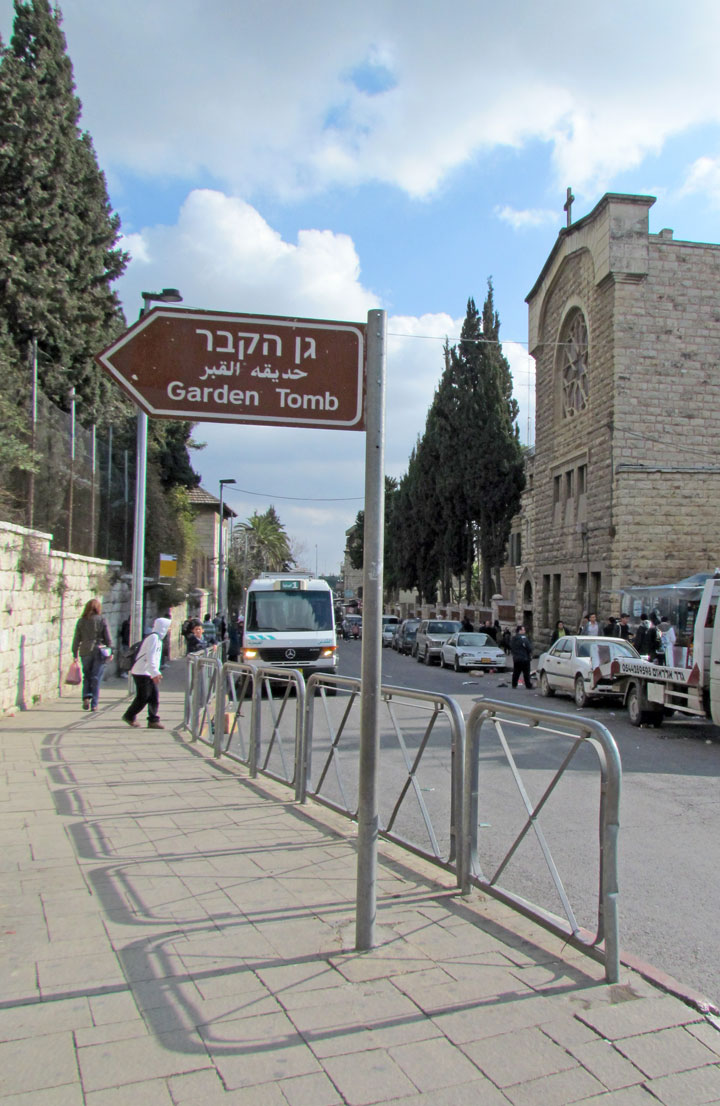
The tombs at the west of the site, alleged to date from the first century, therefore indicating that the site was outside the city at that time, could just as easily date from centuries prior to that.
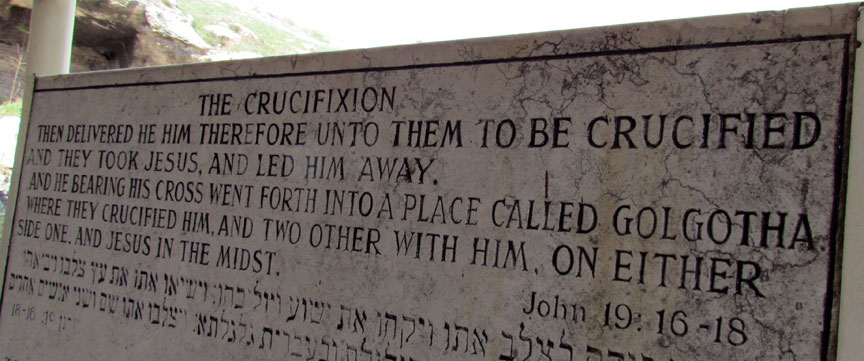
Due to these issues, several nineteenth century scholars had rejected the
traditional site's validity. Additionally many Protestants have often opposed
the traditional location simply because it has previously received support from
Roman Catholic Church, and is sited within an environment which is not low
church. Many of these concerns were aired in the time of Major-General Charles
George Gordon, CB, and it is surmised that he, a Protestant, was motivated by
them to look elsewhere.
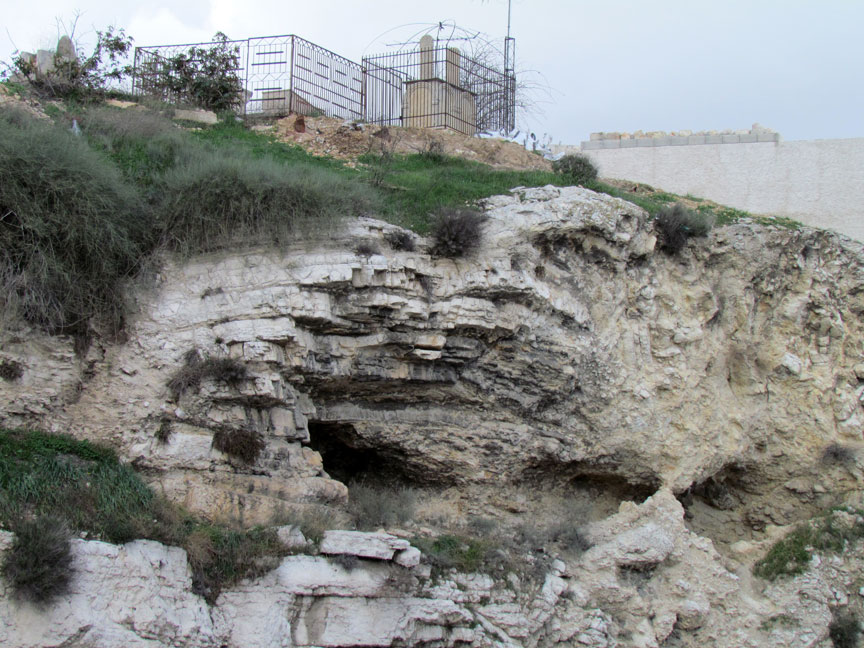
resembles the face of a skull
In 1883, near to the Damascus Gate, General Gordon found a rocky escarpment (now situated just behind a Palestinian bus station), which from several angles resembled the face of a skull; since one of the possible etymologies for Golgotha is the Aramaic word for skull, and may refer to the shape of the place, Gordon concluded that the rocky escarpment was likely to have been Golgotha. Prior to Gordon, this possibility had also been suggested by Colonel Conder in 1870 (an associate of Lord Kitchener), by Fisher Howe in 1871, and by the German scholar Otto Thenius in 1842.
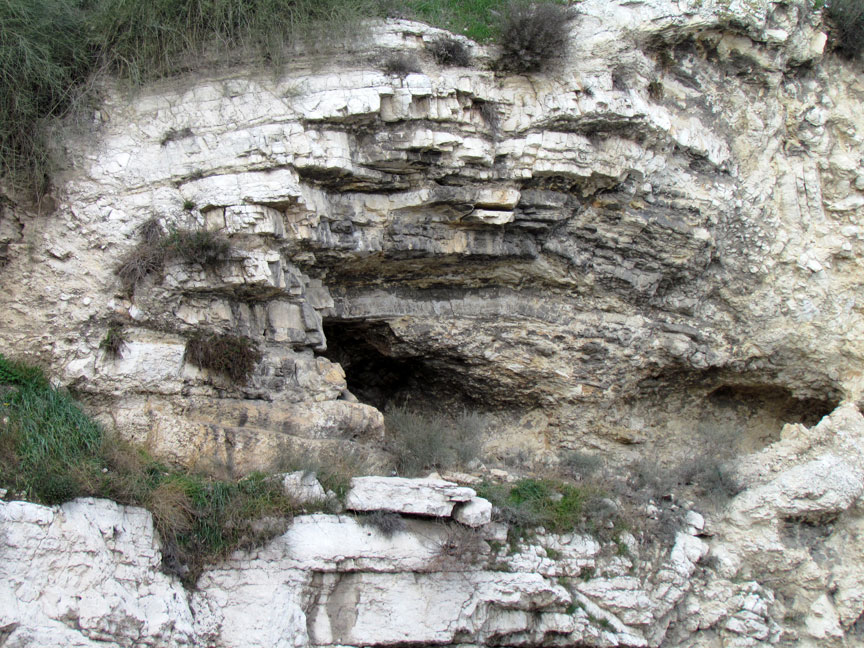
The Church of the Holy Sepulchre has its tomb just a few yards away from its
Golgotha, corresponding with the account of John the Evangelist: "Now in the
place where he was crucified there was a ... new tomb" (John 19:41). In 1869 a
number of tombs had also been found near Gordon's Golgotha, and Gordon concluded
that one of them must have been the tomb of Jesus. John also specifies that
Jesus' tomb was located in a garden; consequently, an ancient wine press and
cistern have been cited as evidence that the area had once been a garden, and
the somewhat isolated tomb adjacent to the cistern has become identified as the
Garden Tomb of Jesus. This particular tomb also has a stone groove running along
the ground outside it, which Gordon argued to be a slot that once housed a
stone, corresponding to the biblical account of a stone being rolled over the
tomb entrance to close it.
Text from Wikipedia

nearby

the garden
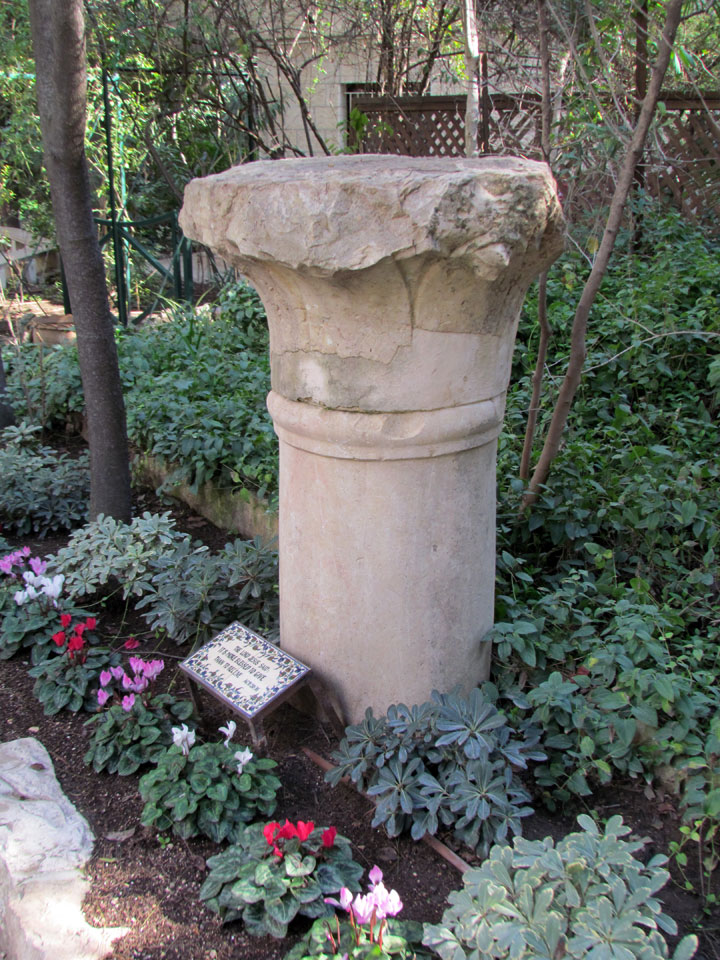
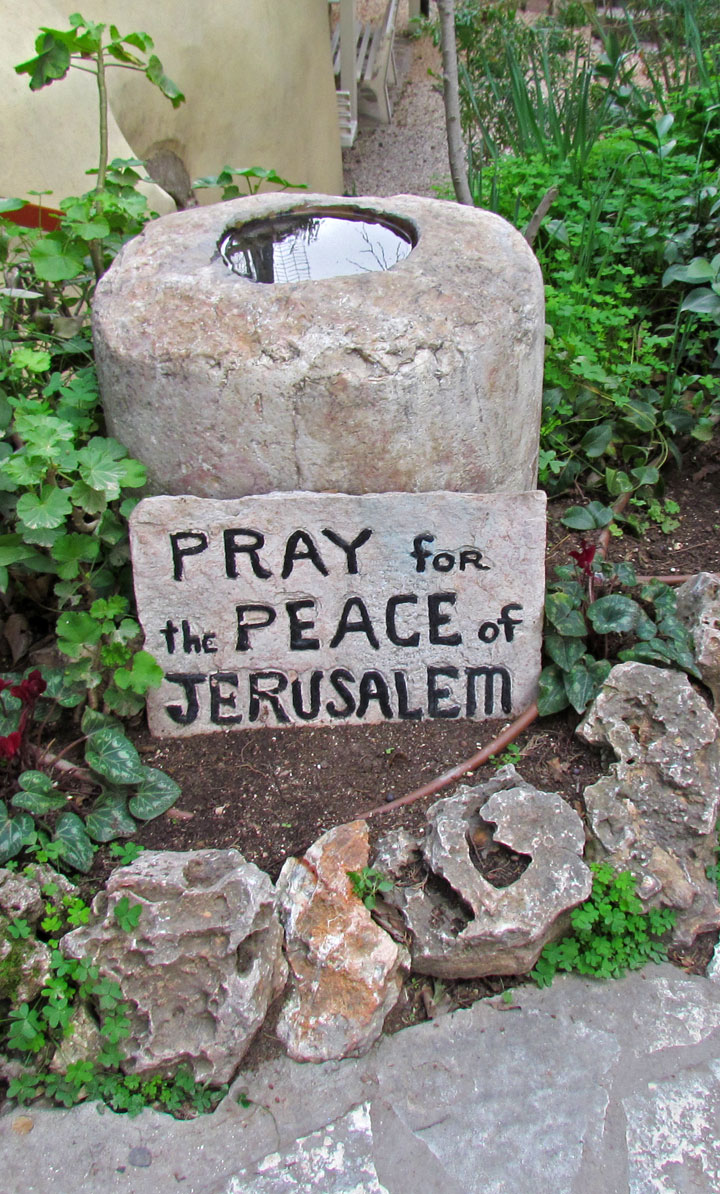
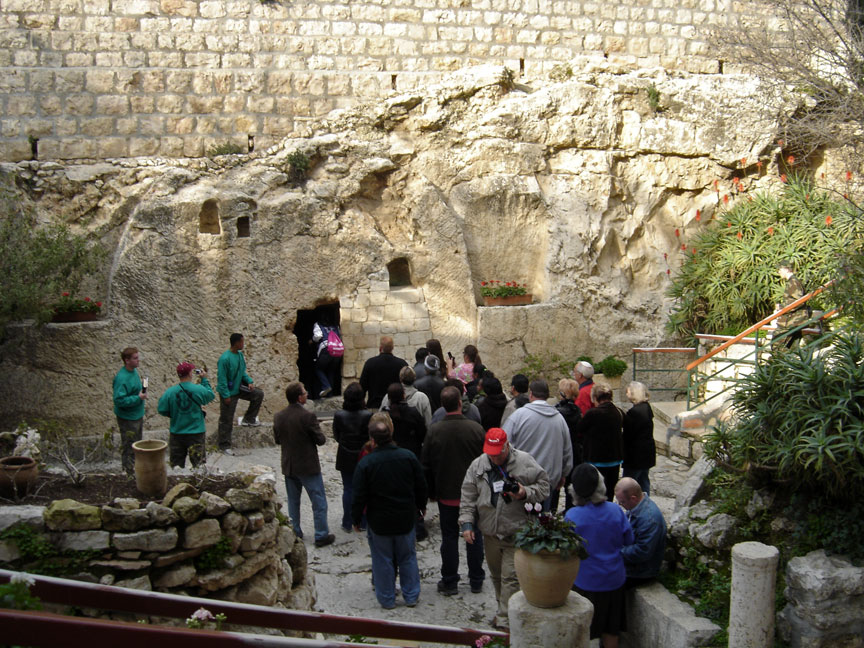
the tomb


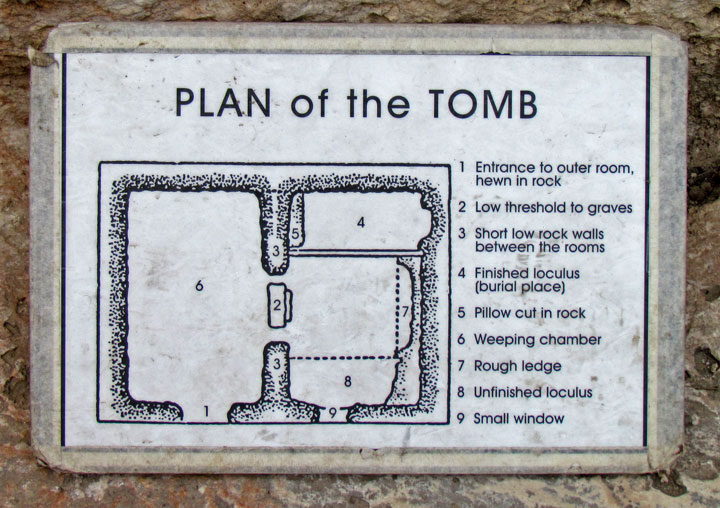
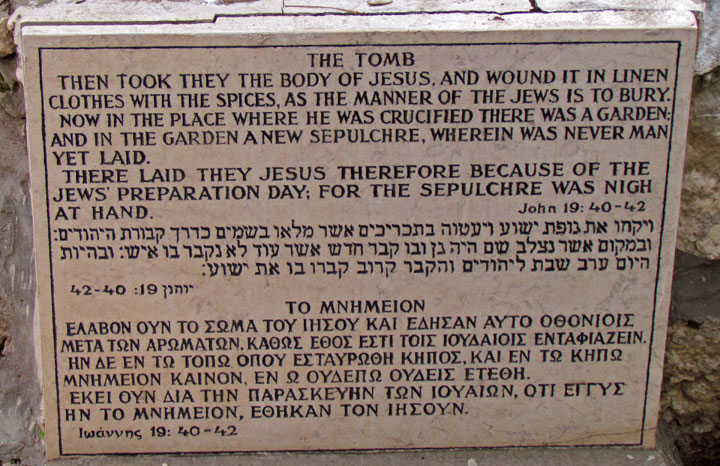
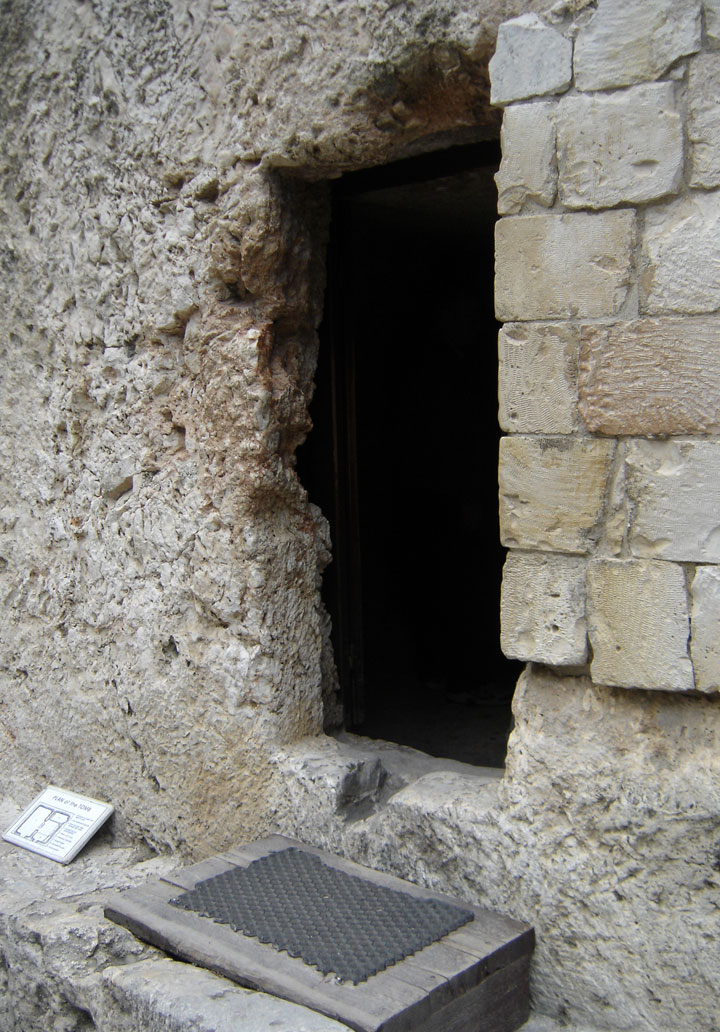
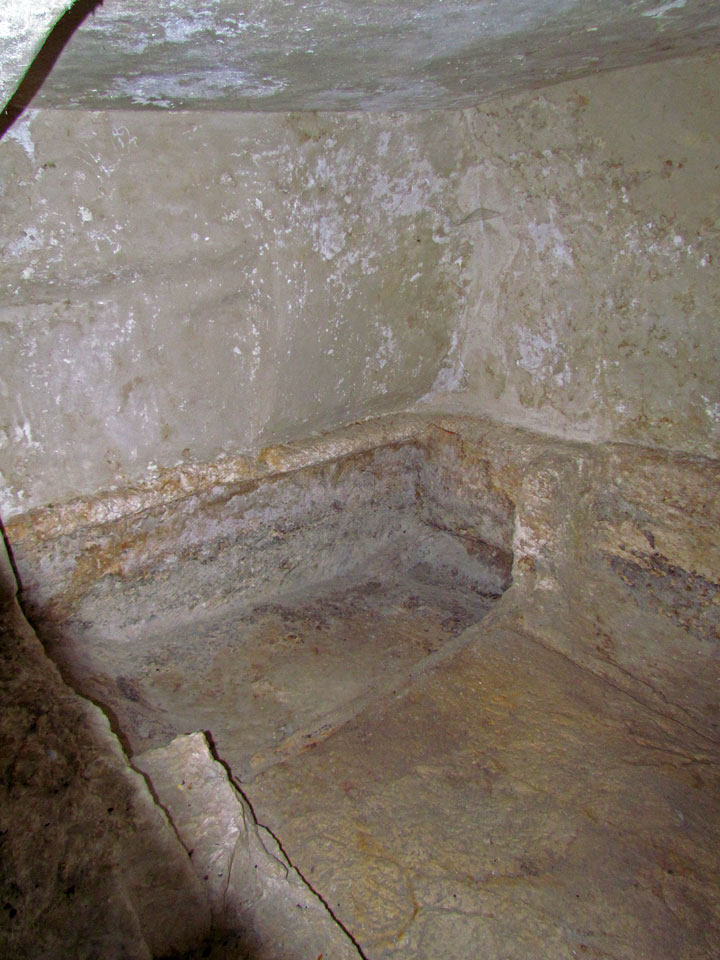
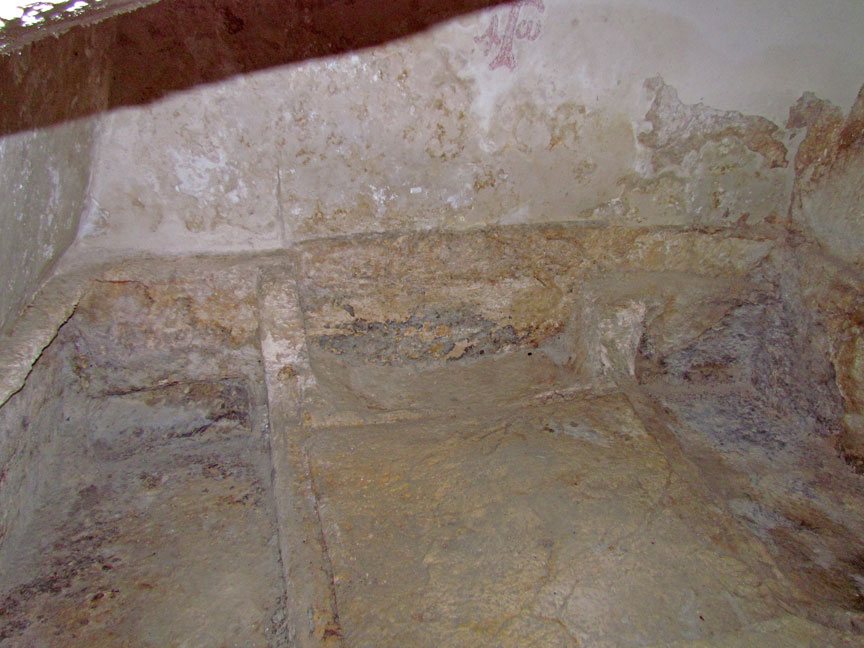

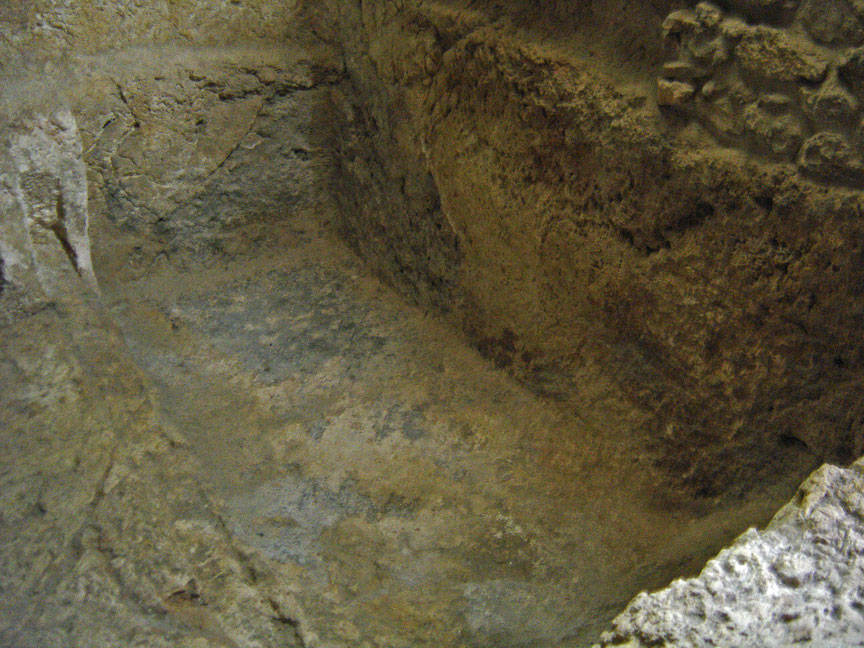
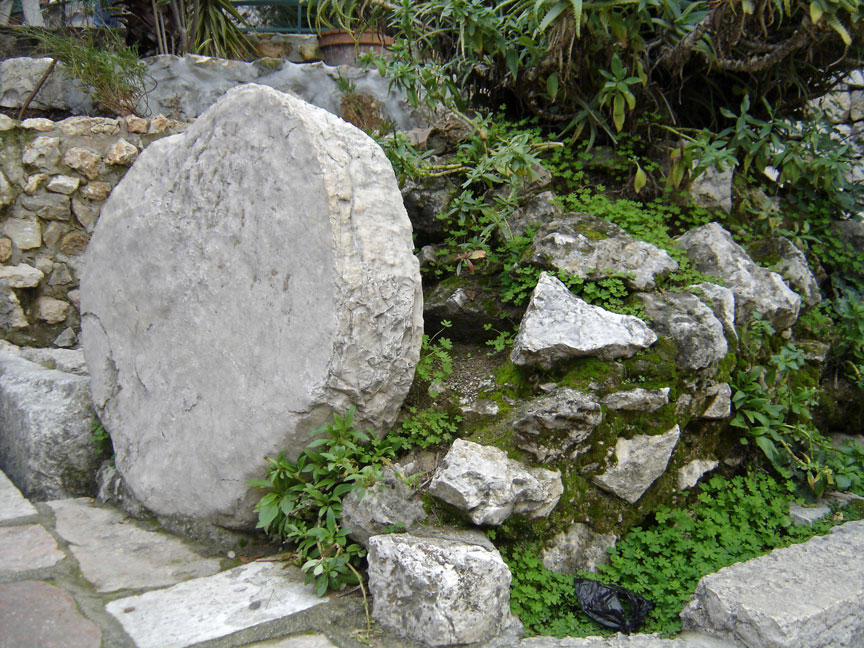
stone which could have been used to close a tomb


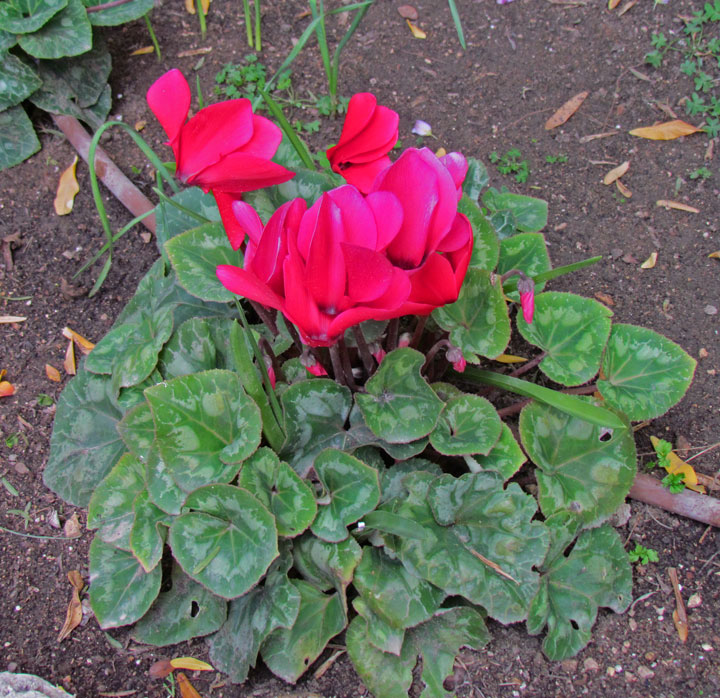

wood carvings sold from the back of a car
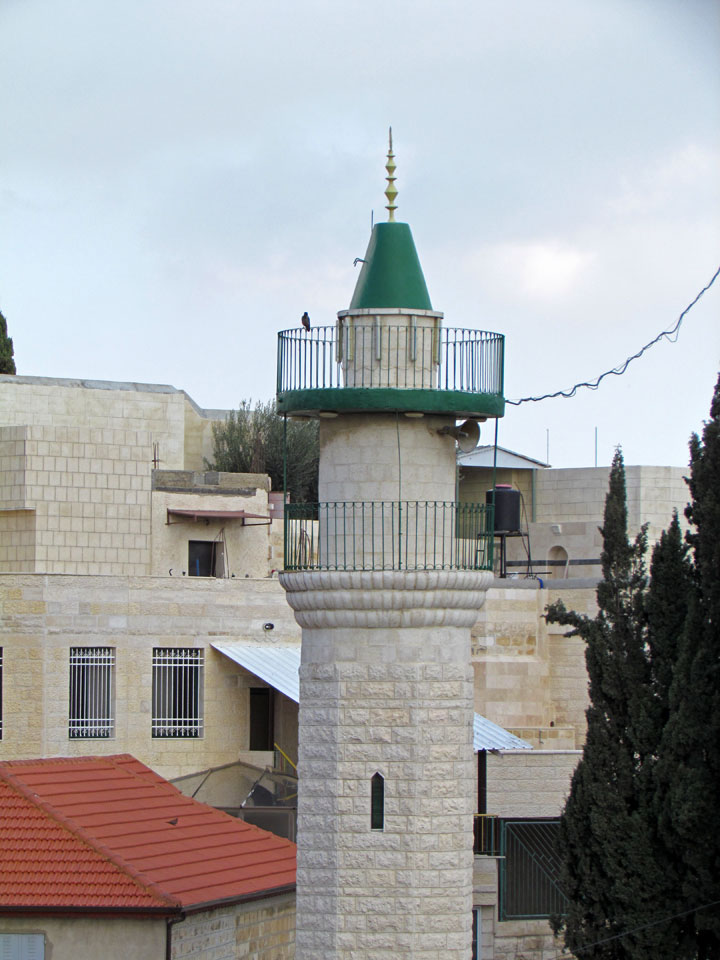
one minaret
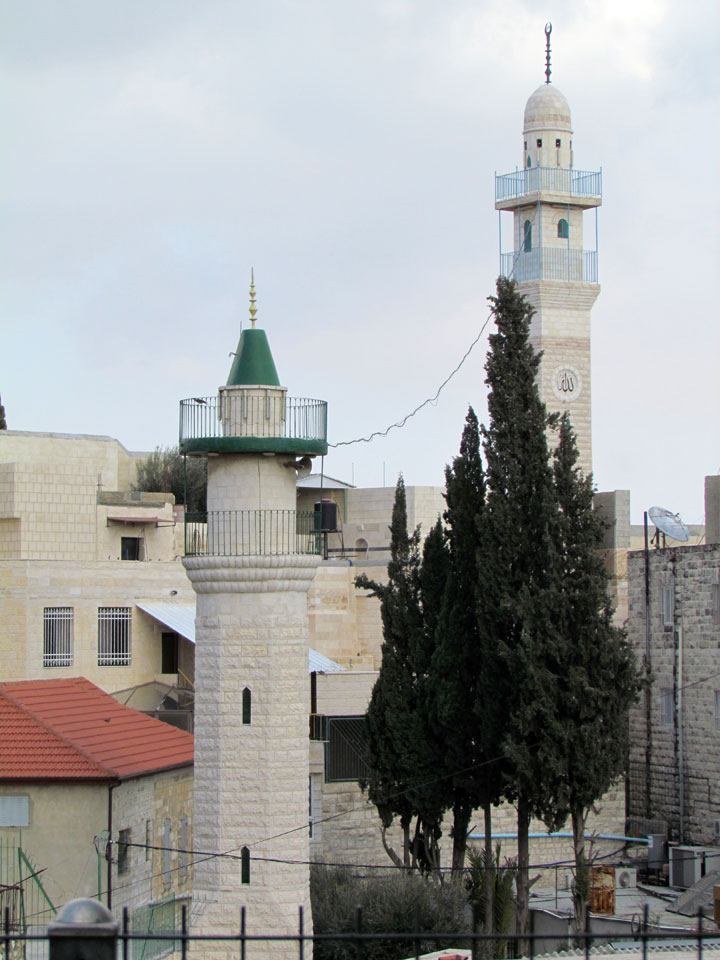
two minarets